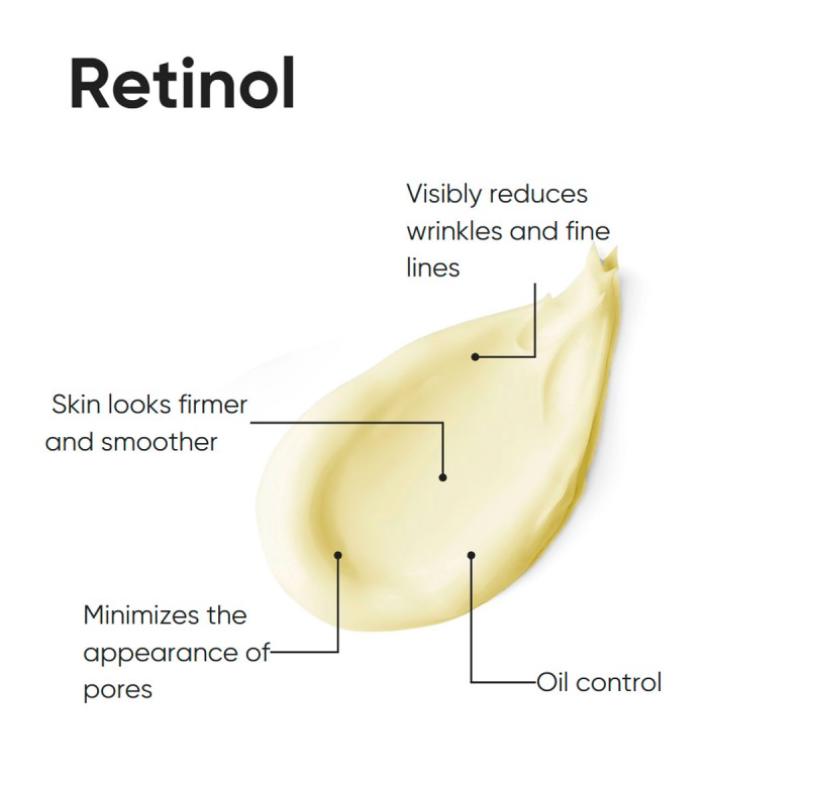✨Welcome, skincare enthusiasts! ✨
Today, we’re exploring Retinol, one of the most renowned anti-aging ingredients in skincare. Specifically, we’ll be comparing two popular concentrations: 0.3% and 2%. Whether you’re a beginner or a seasoned retinol user, this guide will help you better understand how to choose the right strength for your skin. Let’s dive in!
🌟 What is Retinol?
Retinol is a type of retinoid, derived from Vitamin A, and is celebrated for its transformative effects on the skin. Here’s what makes it so special:
- Promotes skin cell turnover, revealing fresher, younger-looking skin.
- Stimulates collagen production, which naturally decreases with age.
- Regulates sebum production, helping to balance oily skin.
- Refines pores, helping to unclog and minimize their appearance.
- Reduces hyperpigmentation, fading dark spots and evening out skin tone.
🔬 The Science Behind Retinol
1. Cell Turnover
- Speeds up the process of replacing old, damaged skin cells with new ones.
2. Collagen Stimulation
- Boosts collagen production, improving skin elasticity and reducing fine lines.
3. Sebum Regulation
- Helps normalize oil production, preventing clogged pores and breakouts.
4. Pore Refinement
- Unclogs pores, leading to a smoother and more refined skin texture.
5. Hyperpigmentation Reduction
- Gradually fades dark spots and promotes a more even complexion.
🤔 Comparing 0.3% and 2% Retinol Concentrations
Retinol 0.3%
- Strength: Considered a low to moderate strength.
- Best For: Beginners or those with sensitive skin.
- Irritation Risk: Lower risk of redness, dryness, or peeling.
- Results Timeline: May take 12-24 weeks to see noticeable results.
- Frequency: Can often be used daily after an adjustment period.
Retinol 2%
- Strength: Considered a high strength for over-the-counter products.
- Best For: Experienced retinol users or those with resilient skin.
- Irritation Risk: Higher risk of redness, dryness, and peeling.
- Results Timeline: May show faster results in 8-12 weeks, but with a greater chance of irritation.
- Frequency: Typically used 2-3 times per week, even for experienced users.
🛠️ Key Differences Between 0.3% and 2% Retinol
1. Strength and Efficacy
- 2% Retinol: Roughly 6-7 times stronger than 0.3%.
- 0.3% Retinol: Gentler but still effective with consistent use.
2. Irritation Potential
- 0.3% Retinol: Less likely to cause redness, dryness, or peeling.
- 2% Retinol: Higher risk of irritation, especially for sensitive skin.
3. Adjustment Period
- 0.3% Retinol: Shorter adjustment period, making it easier to integrate into your routine.
- 2% Retinol: Requires a slower, more gradual introduction to avoid irritation.
4. Suitable Skin Types
- 0.3% Retinol: Suitable for most skin types, including sensitive skin.
- 2% Retinol: Best for non-sensitive, resilient skin types.
5. Frequency of Use
- 0.3% Retinol: Can often be used daily after the skin adjusts.
- 2% Retinol: Recommended for less frequent use, even for advanced users.
🛠️ How to Incorporate Retinol Into Your Routine
Start Low:
- If you’re new to retinol, begin with 0.3% to allow your skin to adjust.
When to Apply:
- Use in the evening after cleansing, on dry skin.
Amount to Use:
- A pea-sized amount is enough for the entire face.
Moisturize:
- Follow with a moisturizer to minimize dryness or irritation.
Sun Protection:
- Always use a broad-spectrum sunscreen during the day, as retinol increases sun sensitivity.
🧪 Retinol and Other Ingredients
Works Well With:
- Hyaluronic Acid: Adds hydration and soothes the skin.
- Niacinamide: Helps strengthen the skin barrier and reduce irritation.
Avoid Combining With: AHAs or BHAs on the same night, as they can increase irritation.
⚠️ Things to Keep in Mind
- Retinization: Expect some dryness, redness, or peeling as your skin adjusts to retinol.
- Pregnancy: Retinol is not recommended during pregnancy or breastfeeding.
- Patience Pays Off: Results take time—consistent use over weeks or months yields the best outcomes.
- Sunscreen is Essential: Always protect your skin from UV damage when using retinol.
⚖️ Retinol 0.3% vs. 2%: Which One is Right for You?
Choose 0.3% If:
- You’re new to retinol.
- You have sensitive or reactive skin.
- You prefer a gentler, more gradual approach to anti-aging.
Choose 2% If:
- You’re an experienced retinol user.
- You have resilient skin that can handle stronger actives.
- You’re looking for faster, more dramatic results.
💧 Pure Relax: Your Retinol Partner
At Pure Relax, we understand that every skin journey is unique. Whether you’re starting with 0.3% Retinol or upgrading to 2%, we’re here to guide you every step of the way.
Lesielle Skincare System
With our Lesielle Skincare System, you can create a personalized routine tailored to your skin’s needs. Pair retinol with:
- Hyaluronic Acid for hydration.
- Niacinamide for barrier support.
- Vitamin E for added antioxidant protection.
This system allows you to enjoy the benefits of retinol alongside other powerful actives, ensuring your skin stays balanced and glowing!
🔑 Pro Tips for Retinol Success
- Start Slow: Introduce retinol gradually to minimize irritation.
- Hydrate and Protect: Always pair retinol with a good moisturizer and sunscreen.
- Be Patient: Results take time, but your skin will thank you in the long run.
Thanks for joining us for this deep dive into Retinol concentrations! Whether you’re starting with 0.3% or ready to tackle 2%, we hope this guide helps you make an informed decision. Book a consultation with us at www.purelax.co.uk to find the perfect retinol-based solution for your skin.
Stay glowing!

